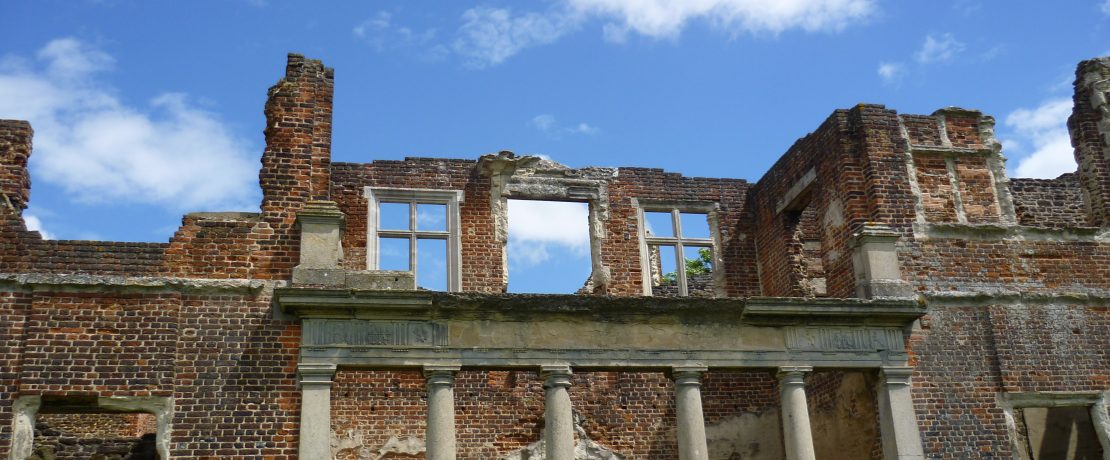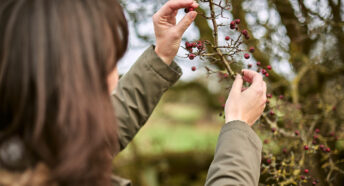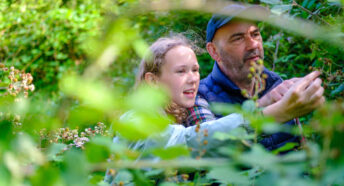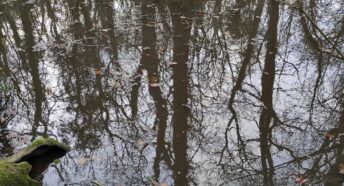Icons of Bedfordshire
In September CPRE Bedfordshire asked our Facebook followers “what is the first landscape, special place or landmark that comes to mind when someone says ‘Bedfordshire’?”
We received an array of answers including Dunstable Downs, the Greensand Ridge, the Cardington hangars, the view from Ampthill Great Park towards Bedford and Cranfield, the Embankment in Bedford, the Whipsnade white lion, the Stewartby chimneys and Woburn deer park. Interestingly, there was no clear front runner and a wide range of ideas on how the question might be interpreted.
Earlier in the year we shared an article published in the Telegraph which suggested that Bedfordshire might be the most ‘boring’ county, drawing on research from YouGov about people’s awareness of different English counties. The article was positive about Bedfordshire’s landscapes and rich history but readers could be forgiven for being left with the impression that there was no particular defining feature to the county. I know from experience that when talking to friends from other parts of the country, it is often Luton Airport that comes to mind.
All of this has made me think about how I would define Bedfordshire and what I think of as its landmarks and landscapes.
At CPRE Bedfordshire we are always keen to talk about the sheer variety of landscapes in Bedfordshire, for a small county we have a lot to celebrate. Bedfordshire encompasses the chalk downs of the Chilterns AONB, the Greensand Ridge, the limestone villages of the Great Ouse Valley in North Bedfordshire and the many reclaimed brick and gravel pits which are now havens for wildlife. Our landscapes are often easy to access and explore, their scale is manageable and there is an everyday quality to them that means people can quickly feel at home.
The landscapes are full of interesting landmarks, as well as those mentioned above, places like Stevington Windmill, Elstow Moot Hall and the evocative ruins of Houghton House make Bedfordshire worth exploring. It sometimes feels like there is something to discover round every corner!
These are excellent qualities for a county but they didn’t get me any closer to a sense of an iconic landmark or defining landscape.
In 2008 CPRE produced a book, Icons of England, which was introduced by the then President, the writer Bill Bryson. Artists, writers and presenters were invited to nominate their icons which were then organised into sections such as ‘the living landscape’ and ‘attention to detail’. Some of these were particular places or landscapes like the Malvern Hills, Hadrian’s Wall or the Norfolk Broads but others were more thought provoking and included orchards, piers, spires, holloways, pub signs and bonfires.
It might be cheating, as it allows me to get out of answering the question I posed to myself and the CPRE Bedfordshire Facebook followers, but I found the approach of Icons of England really interesting. In the foreword Jackie Scully talks about the importance of personal anecdotes, memories and honest opinions in the selections and so I’d like to offer three things I’d nominate for inclusion in an imagined ‘Icons of Bedfordshire’ book.
Laxton’s apples
Over three generations and one hundred years, the Laxton family firm raised 182 new species of plants which included apples, plums and pears. In about 1900 they set up Tollgate Nurseries (140 acres) in Bedford.
When visiting community orchards and growing projects ahead of the CPRE Bedfordshire Living Countryside Awards in 2018 I was struck by how many of them had chosen to concentrate on historic local varieties, with Laxton’s apples usually at the top of the list.
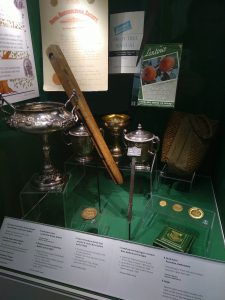
Houghton House
As a child, my early interest in history was sparked by visiting ruins, usually of castles or abbeys, they were always places which sparked the imagination. Bedfordshire is relatively light on ruins but Houghton House (pictured at the top of the page) is a glorious exception. It was built in around 1615 and is usually acknowledged as the inspiration for the ‘House Beautiful’ in John Bunyan’s Pilgrim’s Progress.
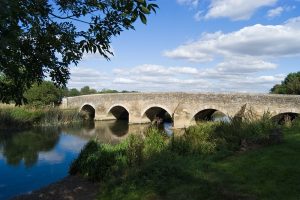
The bridges of the Great Ouse
The river Great Ouse meanders through North Bedfordshire, defining the landscape before cutting through the centre of Bedford along The Embankment, often referred to as ‘the jewel in Bedford’s crown’ and heading out towards Cambridgeshire through Great Barford. There are many crossing points from the medieval Harrold bridge, to the Millennium or ‘butterfly’ bridge in Bedford.
As well as often being landmarks in their own right, the bridges also tell a story about Bedfordshire’s past – with many having long histories as crossing points or being originally related to mills or the river trade. Today they are more often places to pause and take in the view or appreciate the calming effect of flowing water.
I have discovered that it may not always be easy to define Bedfordshire but the attempt is certainly rewarding.
Shelly Dennison – Digital Engagement Officer
What would you nominate as an icon of Bedfordshire? Join the conversation on our Facebook Page.
